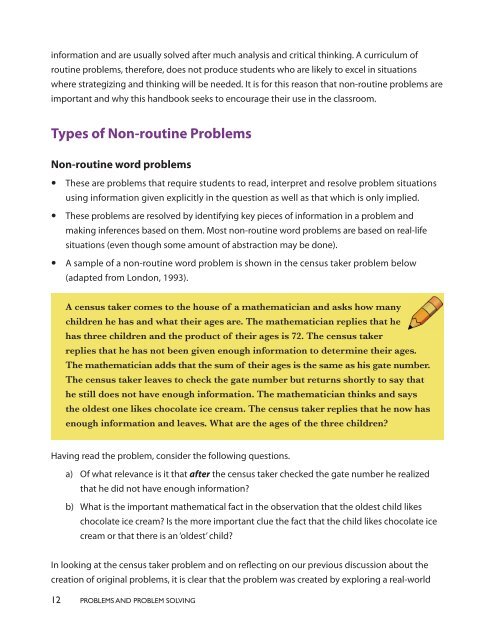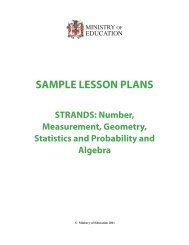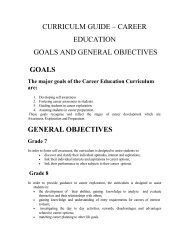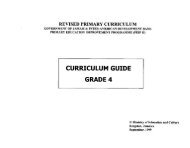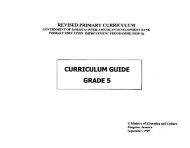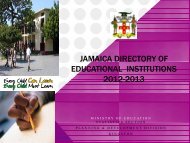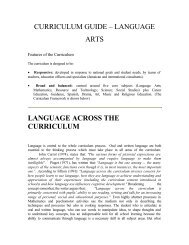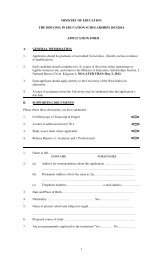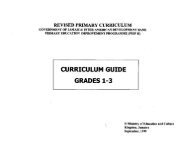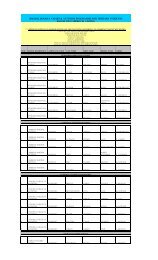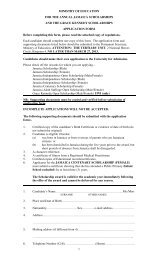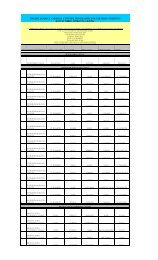Problems and Problem Solving - Ministry of Education
Problems and Problem Solving - Ministry of Education
Problems and Problem Solving - Ministry of Education
You also want an ePaper? Increase the reach of your titles
YUMPU automatically turns print PDFs into web optimized ePapers that Google loves.
information <strong>and</strong> are usually solved after much analysis <strong>and</strong> critical thinking. A curriculum <strong>of</strong><br />
routine problems, therefore, does not produce students who are likely to excel in situations<br />
where strategizing <strong>and</strong> thinking will be needed. It is for this reason that non-routine problems are<br />
important <strong>and</strong> why this h<strong>and</strong>book seeks to encourage their use in the classroom.<br />
Types <strong>of</strong> non-routine <strong><strong>Problem</strong>s</strong><br />
non-routine word problems<br />
•y<br />
These are problems that require students to read, interpret <strong>and</strong> resolve problem situations<br />
using information given explicitly in the question as well as that which is only implied.<br />
• These problems are resolved by identifying key pieces <strong>of</strong> information in a problem <strong>and</strong><br />
making inferences based on them. Most non-routine word problems are based on real-life<br />
situations (even though some amount <strong>of</strong> abstraction may be done).<br />
•y<br />
A sample <strong>of</strong> a non-routine word problem is shown in the census taker problem below<br />
(adapted from London, 1993).<br />
A census taker comes to the house <strong>of</strong> a mathematician <strong>and</strong> asks how many<br />
children he has <strong>and</strong> what their ages are. The mathematician replies that he<br />
has three children <strong>and</strong> the product <strong>of</strong> their ages is 72. The census taker<br />
replies that he has not been given enough information to determine their ages.<br />
The mathematician adds that the sum <strong>of</strong> their ages is the same as his gate number.<br />
The census taker leaves to check the gate number but returns shortly to say that<br />
he still does not have enough information. The mathematician thinks <strong>and</strong> says<br />
the oldest one likes chocolate ice cream. The census taker replies that he now has<br />
enough information <strong>and</strong> leaves. What are the ages <strong>of</strong> the three children?<br />
Having read the problem, consider the following questions.<br />
a) Of what relevance is it that after the census taker checked the gate number he realized<br />
that he did not have enough information?<br />
b)<br />
What is the important mathematical fact in the observation that the oldest child likes<br />
chocolate ice cream? Is the more important clue the fact that the child likes chocolate ice<br />
cream or that there is an ‘oldest’ child?<br />
In looking at the census taker problem <strong>and</strong> on reflecting on our previous discussion about the<br />
creation <strong>of</strong> original problems, it is clear that the problem was created by exploring a real-world<br />
12 PROBLEMS AND PROBLEM SOLVING<br />
<strong>Problem</strong><strong>Solving</strong>.indd 12<br />
8/24/12 6:55:34 PM


